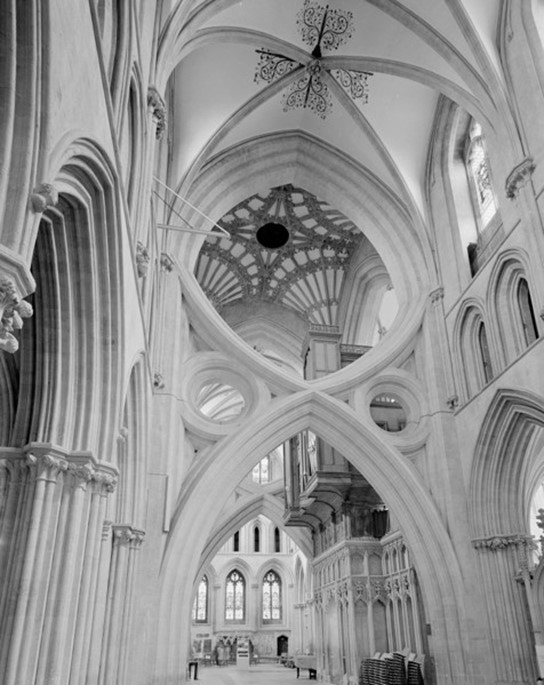
As I write about ‘forced perspective’ or ‘monumental grammar’ a nagging feeling surfaces. The comparison between language and architecture or even the idea of an architecture of language may well be a mere cultural artefact? Contingent on a historical moment, arbitrary? As Roman Jakobson began to choose his words to depict the ‘poetry of grammar’, it seems as if he writes about architecture? As his reader we are made to see upright arcs and inverted arcs in poetry. Is there a fundamental spatial element hidden inside language? As an anthropologist and student of cultures, I ask myself how other cultures evoke this kind of architecture, how do they put it into words?

This leads me to re-visit an ancient image from nearly 2.5 millennia ago. How did people think about the notion of ‘the word’ itself in an ancient world? How does one invent a name, a term that captures what we now know as ‘word’? As a sonic object floating in acoustic space, as a written unit on paper, as taking up a grammatical position in a sentence? I turn to an ancient grammarian from the 4th century BC, Pāninị, who wrote about language in Sanskrit. This language to talk about language, this meta-language, emerged in a particular cultural milieu, an era known for Vedic ritual. What did Pāninị call ‘the word’? He called it ‘pada’, a footstep, as in the steps made during a ritual. What comes to mind is the gap between the beginning of the step and its completion, all included in his term. It is an ancient spatial image I propose to retain when thinking about the architecture of language with our current tools.

References
Hastings, Adi (2003) From ritual to grammar: Sacrifice, homology, metalanguage. Language & Communication 23: 275-285.
(p. 283)
Jakobson, R. (1981) Selected writings III Poetry of grammar and grammar of poetry. Edited, with a preface by Stephen Rudy. The Hague, Paris, New York: Mouton Publishers.
(p. 96)
Pillen, Alex (2017) A Space That Will Never Be Filled Sharp Communication and the Simultaneity of Opposites. Current Anthropology 58(6): 718- 738.
(p. 721)
Renou, Louis (1941–1942). Les connexions entre le rituel et la grammaire en Sanskrit. Journal Asiatique 233(1):105–165.
(pp. 134–137, 144, 152, 160)
RIBApics Wells Cathedral, Somerset: detail of the strainer arches, seen from the south transept.